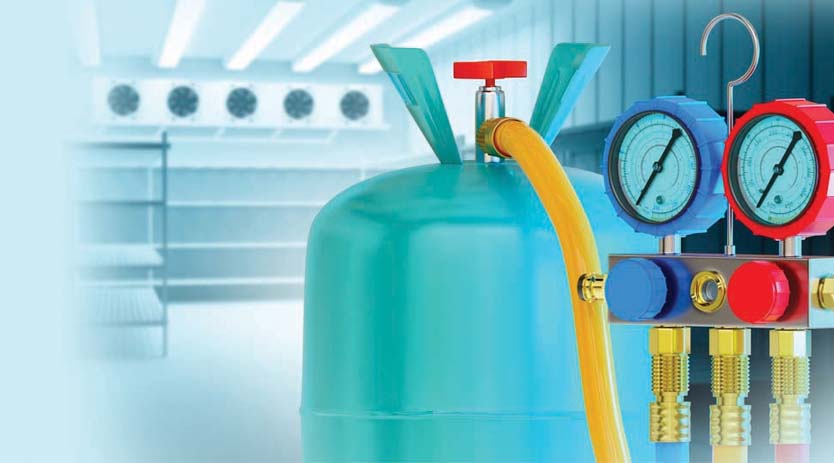Industry experts share views on an action plan for sustainable cooling, service technicians’ skilling, and reducing cooling energy aligned with economy growth since ICAP deliberates advancing cooling technologies, ECBC, and smart cooling plans.
India is the first country to develop a cooling action plan based on energy efficiency and thermal comfort. ICAP has placed India on the international radar and garnered interest in supporting global momentum for creating National Cooling Action Plans. ICAP is aimed to see the impact across residential and commercial buildings, cold-chain, refrigeration, transport and industries sectors. Towards promoting passive cooling in buildings, the Bureau of Energy Efficiency has brought out the ECBC code for all commercial buildings and Eco-Niwas Samhita (ECBC-R) for residential buildings.
ICAP lists out actions which may help reduce the cooling demand. The goals seek to reduce cooling demand across sectors by 20–25 percent by 2037-38. ICAP also aims to train and certify 100,000 service technicians by 2022–23, synergising with the Skill India Mission. These actions will have significant climate benefits. Cooling is also linked to human health and productivity. The cross-sectoral nature of cooling and its use in the development of the economy is a developmental necessity. ICAP has placed India on the international radar and garnered significant interest in supporting global momentum for creating National Cooling Action Plans.
ICAP for reducing cooling demand
India’s cooling action plan would prove helpful with an overall reduction in the cooling demand. Firstly, it talks explicitly about the decrease in demand from a cooling perspective. It also comprises pruning the refrigerant demand. Ms. Shruti Gupta, YEA (Young Engineers Association) Chair at ASHRAE India Chapter, “With a forecast perspective, the energy requirement from the cooling front has to be broken down into levels. Firstly the ministry level and then the state-designated agency level for devising a policy and framework. This would ensure steady policy implementation.” If it gets defined on this level, the horizon for 20 years would be noteworthy. During the period when it is penetrating the market, the target and ways to see its growth as per the framework can be studied.
The action plan is more like a framework that highlights the key areas that should be targeted. Extending further, Mr. Kushagra Juneja, Managing partner at Design2Occupany Services LLP stated, “A part of those targets can be the National skill programme where technicians need to be trained. Although BEE is doing its work bit by bit by upskilling, the skills under the NSDC scheme would be far more effective.” It is up to the different agencies and stakeholders to pick the aspects from the action plan, thus enabling them. A Star labelling programme is being developed for cold storage for newer air conditioning systems. All these things are a part of the implementation of an action plan. The action plan itself will certainly not bring an impact, but it creates a roadmap for the entire country to follow.
India cooling action plan and the reduction sounds like an oxymoron. The way cooling action plan has been projected is viable for cooling demand during the next 20 years and the vision for 2070. It also talks about sustainability. Mr. Dipankar Bhattacharya, Country General Manager-India at DB-Aire India Pvt. Ltd., stated that the demand is increasing as the consumption level is also rising. “The cooling is being delivered efficiently and sustainably. This is to ensure that the impact to the environment is less in terms of energy consumption and greenhouse gas emissions.” This is the overall plan of ICAP.
The elements critical to the ICAP are the building space and the cooling space, which are getting developed. The development has to consider sustainability as there are no two ways about it. The space that is built and the design that is adopted for the building material had to be executed most efficiently in the system. This makes it possible to reduce the cooling demand. The cooling requirement of a building is one of the essential prerequisites towards reducing the cooling demand, adds Mr. Dipankar. Yet another critical factor is how the industry responds to the ever-growing need for cooling in the building space. It offers the equipment in line with the codes and standards available in line with the best efficiency.
The promoters of the building and the building owners also need to take a step ahead, ensuring that the right equipment is going into the building. Also, the energy efficiency level will stay the same with the adaptation of newer and more efficient technologies. The building designers, the building owner and the promoters must take a step forward. They must increase the standard in capital equipment purchase when the building process is in the development stage. It cannot be only on the first cost. There has to be an element of lifecycle cost that needs to be brought in while making the decision.
The other element is the transition in the refrigerant that is happening. Mr. Dipankar categorically stated, “Over the next decade, the transition would be seen where the adaptation of the new refrigerants would be witnessed.” Green refrigerant, the HFO-based refrigerant that has the least global warming potential and ozone-depleting potential, is more efficient than HFC. However, this would be happening along with the rapid urbanisation and growth in the building industry segment.

Technology measures adopted
Apart from infrastructure as a sector, the agriculture sector is also to be taken into account, says Ms. Shruti. Wide varieties of fruits not even native to India have been curated and are now grown in the country. They are getting transferred to metro cities and tier one, tier two and tier three cities. This is how the benefits of using it to maximum potential are derived, getting the best out of it for various sectors and segments. It needs to be ensured that there is minimal wastage for fresh production.
HVAC industry and cooling agencies
For the cooling agency, a lot of technology shifts have been proposed. Nowadays, many companies are adopting indirect cooling, a rare thing earlier. Chilled beams were another thing that was criticised a lot, especially in the composite climate and warm and humid climates. But chilled beams are used in many applications as penetration is more profound, albeit people face problems.
Innovation is a must for the large-scale adoption of technology. Talking about agriculture, many innovations are also seen in that field. India is a country of entrepreneurs, a land of a lot of brains and all these innovations are already in the market and available commercially. The challenge is often with the commercial availability of world quality. As users, citizens need to start adopting those technologies.
When new technologies are developed, as a country, the natives should be the first users. The difference between Bangalore and the rest of the country is significant. There are a lot of startups in Bangalore because there are a lot of first users. So in terms of cooling, there should be a push for new technologies for the technology providers and the cooling companies. The more efficient things in the market should be displayed more aggressively. The major focus is on the modern technologies being adopted in the system. It may be in terms of the compressors being offered or the control system or refrigerant, or upskilling technicians.

Training servicing sector technicians
So, the levels of technicians must be upgraded. They are brought up to speed in terms of understanding these new technologies and how they should be handled. What should be the safe mechanism by which they should be handling a system? The technicians have to be trained for commissioning systems or servicing a system. The skilling programme is important. It must be a combination or a joint effort between government and industry. The industry leaders should join hands with the government to ensure that hubs are created in all the regions. Training technicians to handle the New Age refrigerant or new IT system is necessary. All the rapid changes need support and adoption.
The customer side is to be considered as well. A system must be properly handled and serviced or maintained to ensure the efficiency level is delivered. The government has taken the initiative where industry leaders can come together, concludes Mr. Dipankar. The Skill India Mission and other initiatives exist to train the services sector technicians for the inclining shift in the industry. The decisions are to be taken into consideration for a better future.
Mr. Dipankar Bhattacharya, Country General Manager-India at DB-Aire India Pvt. Ltd.
“The cooling is being delivered efficiently and sustainably to ensure less environmental impact in energy consumption and greenhouse gas emissions.”
Ms. Shruti Gupta, YEA (Young Engineers Association) Chair at ASHRAE India Chapter.
“The energy requirement from the cooling front has to be broken down at the ministry and state designated agency levels for devising a policy and framework.”
Mr. Kushagra Juneja, Managing partner at Design2Occupany Services LLP.
“Although BEE is doing its work bit by bit by upskilling, the skilling under the National Skill Development council scheme would be far more effective.”
MR. Milind Mate, Assistant Vice President, Sales & marketing, ZECO Aircon Limited
“We should look forward to keeping buildings cool using effective insulation and building orientation towards the solar heat.”
Cookie Consent
We use cookies to personalize your experience. By continuing to visit this website you agree to our Terms & Conditions, Privacy Policy and Cookie Policy.















